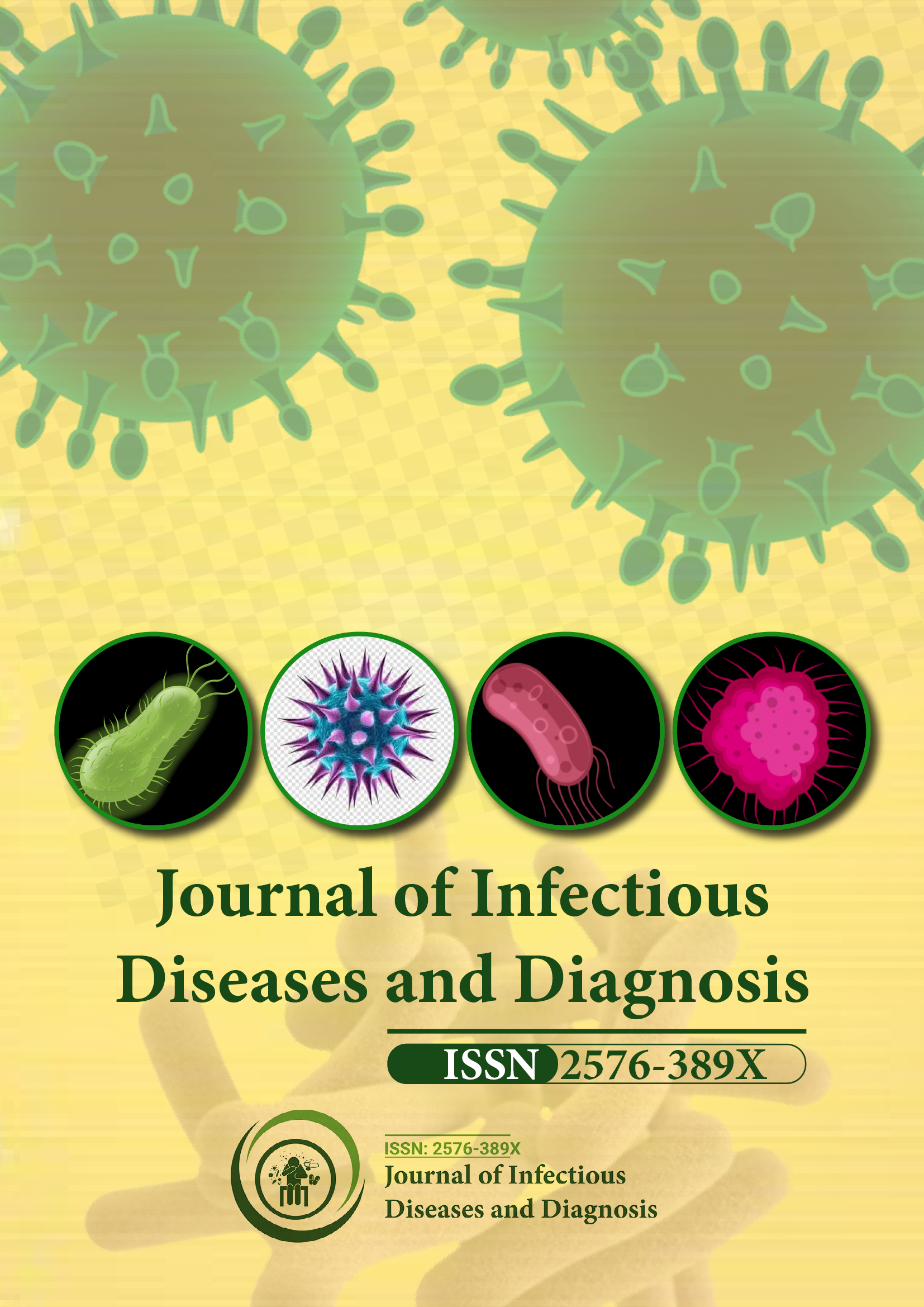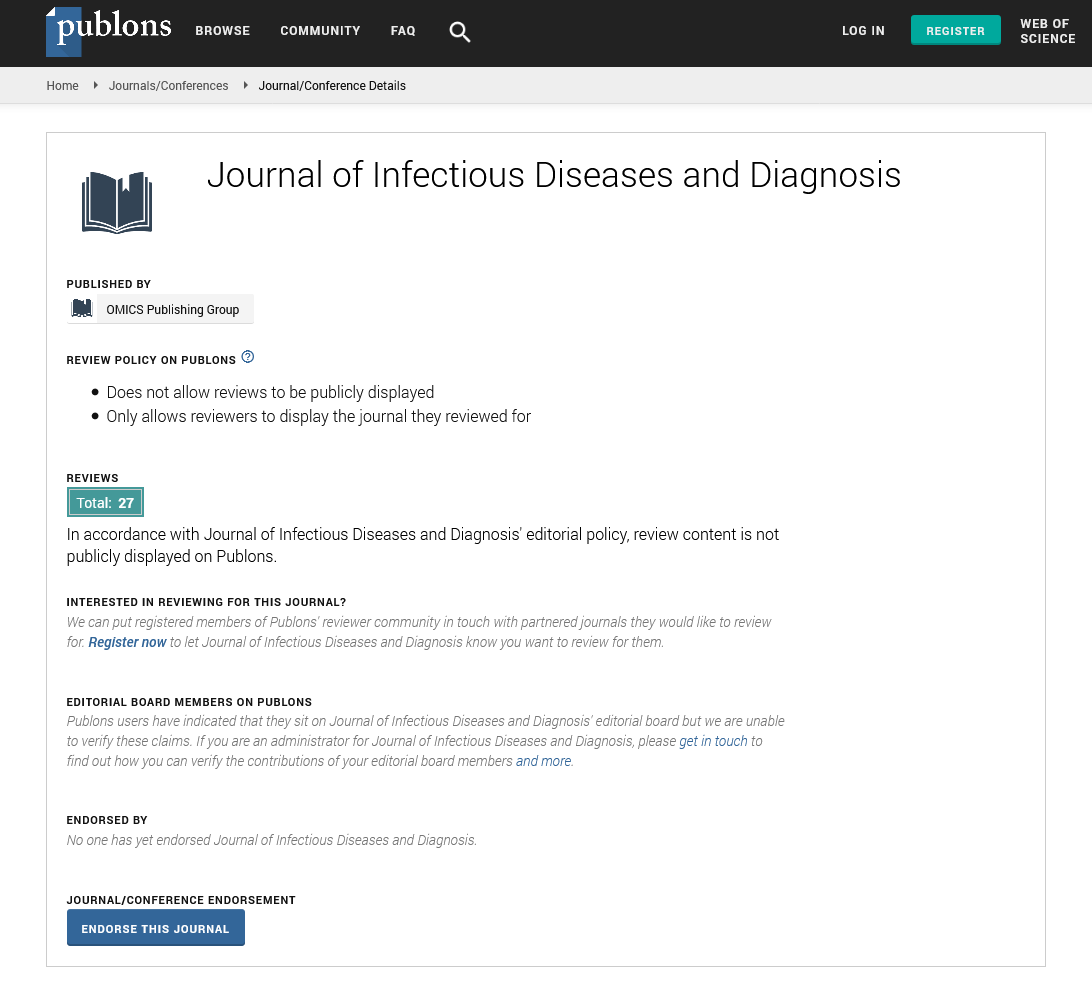Indexed In
- RefSeek
- Hamdard University
- EBSCO A-Z
- Publons
- Euro Pub
- Google Scholar
Useful Links
Share This Page
Journal Flyer

Open Access Journals
- Agri and Aquaculture
- Biochemistry
- Bioinformatics & Systems Biology
- Business & Management
- Chemistry
- Clinical Sciences
- Engineering
- Food & Nutrition
- General Science
- Genetics & Molecular Biology
- Immunology & Microbiology
- Medical Sciences
- Neuroscience & Psychology
- Nursing & Health Care
- Pharmaceutical Sciences
Commentary - (2023) Volume 8, Issue 2
Utilizing Complex Network Theory to Identify Risks of Major Infectious Disease Epidemics
Kevin Wiehe*Received: 01-Mar-2023, Manuscript No. JIDD-23-20785; Editor assigned: 03-Mar-2023, Pre QC No. JIDD-23-20785 (PQ); Reviewed: 17-Mar-2023, QC No. JIDD-23-20785; Revised: 24-Mar-2023, Manuscript No. JIDD-23-20785 (R); Published: 31-Mar-2023, DOI: 10.35248/2576-389X.23.08.204
About the Study
Infectious diseases have been one of the major threats to human health throughout history, and epidemics of these diseases have resulted in devastating consequences to individuals and societies. With the increasing globalization and interconnectivity of the world, the risk of major infectious disease epidemics has become more significant than ever before. Risk identification is crucial to effective prevention and control of infectious disease epidemics, and complex network theory provides a useful framework for understanding the dynamics of disease transmission and identifying potential risk factors.
Complex network theory is a mathematical framework for studying the structure and dynamics of complex systems, such as social networks, biological systems, and transportation networks. In the context of infectious disease epidemics, complex network theory can be used to model the transmission of the disease between individuals and communities. Networks can be represented by nodes and edges, where nodes represent individual actors or units, and edges represent the relationships between them. In the context of infectious disease transmission, nodes represent individuals, and edges represent the potential pathways of transmission between individuals.
There are different types of networks that can be used to model infectious disease transmission, such as random networks, smallworld networks, and scale-free networks. Random networks have edges that are randomly distributed, small-world networks have a high degree of clustering and short average path lengths, and scale-free networks have a few highly connected nodes (known as hubs) and many nodes with only a few connections.
Using complex network theory, we can identify potential risk factors for major infectious disease epidemics. One of the key factors is the structure of the network itself. In random networks, disease transmission is relatively slow and localized, as the probability of an infected individual transmitting the disease to another individual is low. However, in scale-free networks, disease transmission can spread rapidly and widely, as a few highly connected individuals (the hubs) can transmit the disease to many others.
Another factor is the behavior of individuals within the network. For example, individuals with a high degree of connectivity (i.e., those who interact with many others) are more likely to contract and transmit infectious diseases. Additionally, individuals who engage in risky behaviors (such as unprotected sex or drug use) are more likely to contract and transmit infectious diseases.
Geographic factors can also play a role in infectious disease transmission. For example, areas with high population density and poor sanitation can provide fertile breeding grounds for infectious diseases. Additionally, areas with high levels of international travel and trade can facilitate the rapid spread of infectious diseases across borders.
Finally, the characteristics of the infectious disease itself can impact the risk of an epidemic. For example, diseases that are highly contagious and have long incubation periods (i.e., the time between exposure and onset of symptoms) are more likely to result in widespread epidemics. Diseases that are airborne or transmitted through bodily fluids are also more likely to spread rapidly within a network.
The COVID-19 pandemic provides a recent example of how complex network theory can be used to identify potential risk factors for a major infectious disease epidemic. The pandemic has spread rapidly around the world, with over 220 million confirmed cases and 4.5 million deaths as of September 2021.
The structure of the global network of transportation and trade has played a significant role in the spread of the virus. International travel and trade have allowed the virus to rapidly spread from its origin in Wuhan, China, to other parts of the world. Additionally, the highly connected nature of the global transportation network has facilitated the rapid spread of the virus within countries and regions. Behavioral factors have also played a role in the spread of the virus. Individuals who do not practice social distancing, wear masks, or take other precautions are more likely to contract and transmit the virus.
Citation: Wiehe K (2023) Utilizing Complex Network Theory to Identify Risks of Major Infectious Disease Epidemics. J Infect Dis Diagn. 8:204.
Copyright: © 2023 Wiehe K. This is an open-access article distributed under the terms of the Creative Commons Attribution License, which permits unrestricted use, distribution, and reproduction in any medium, provided the original author and source are credited.

